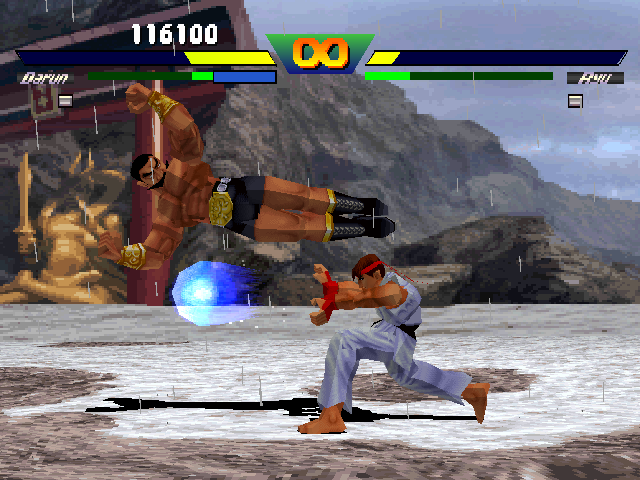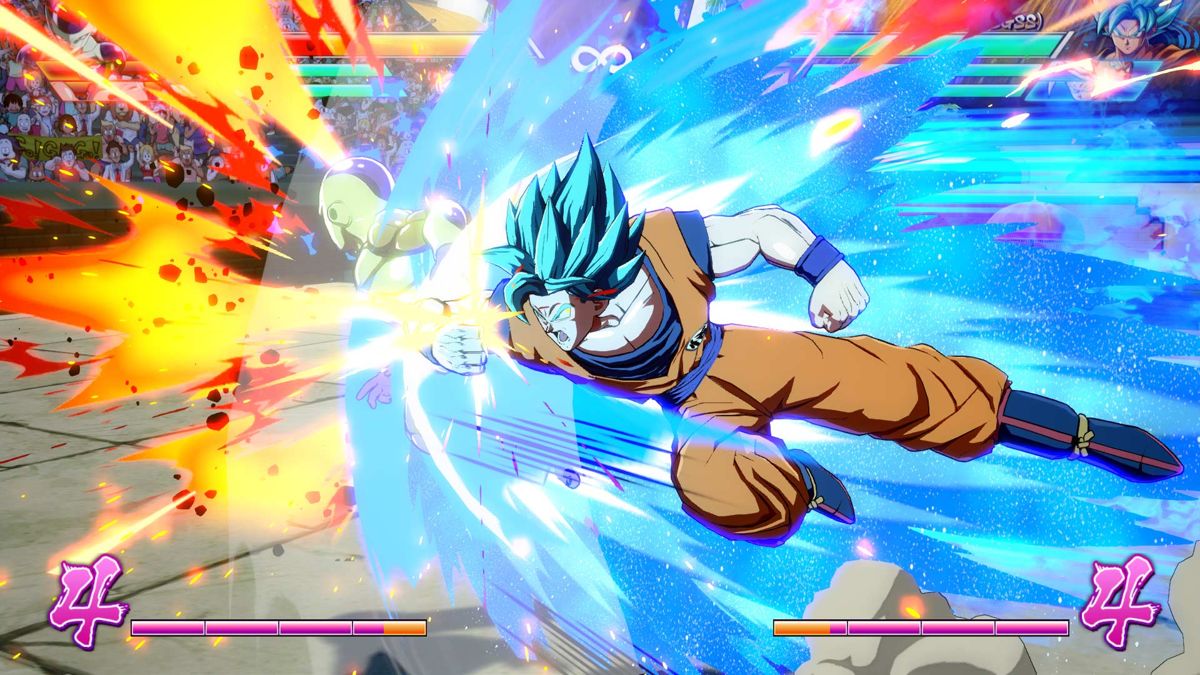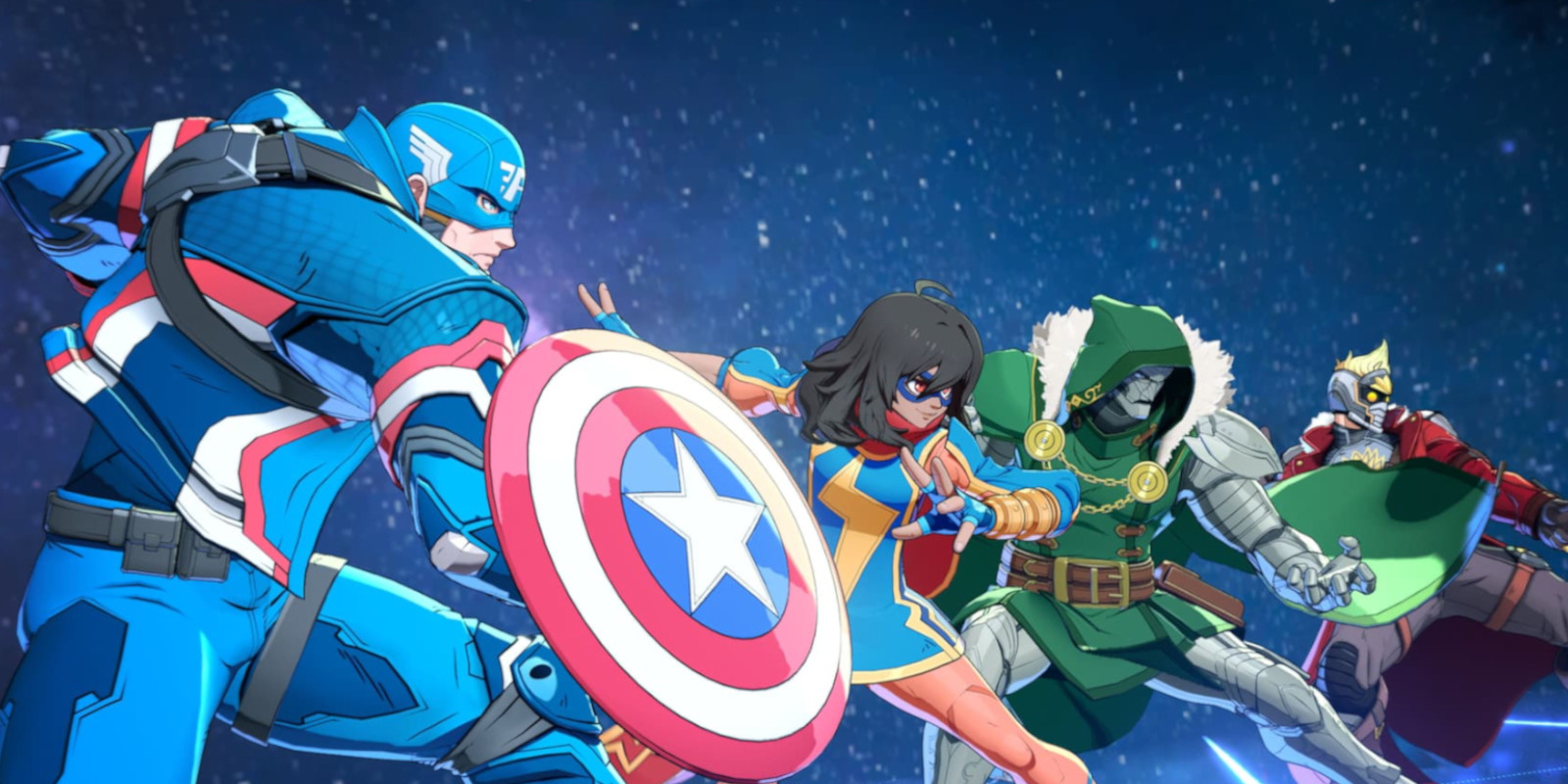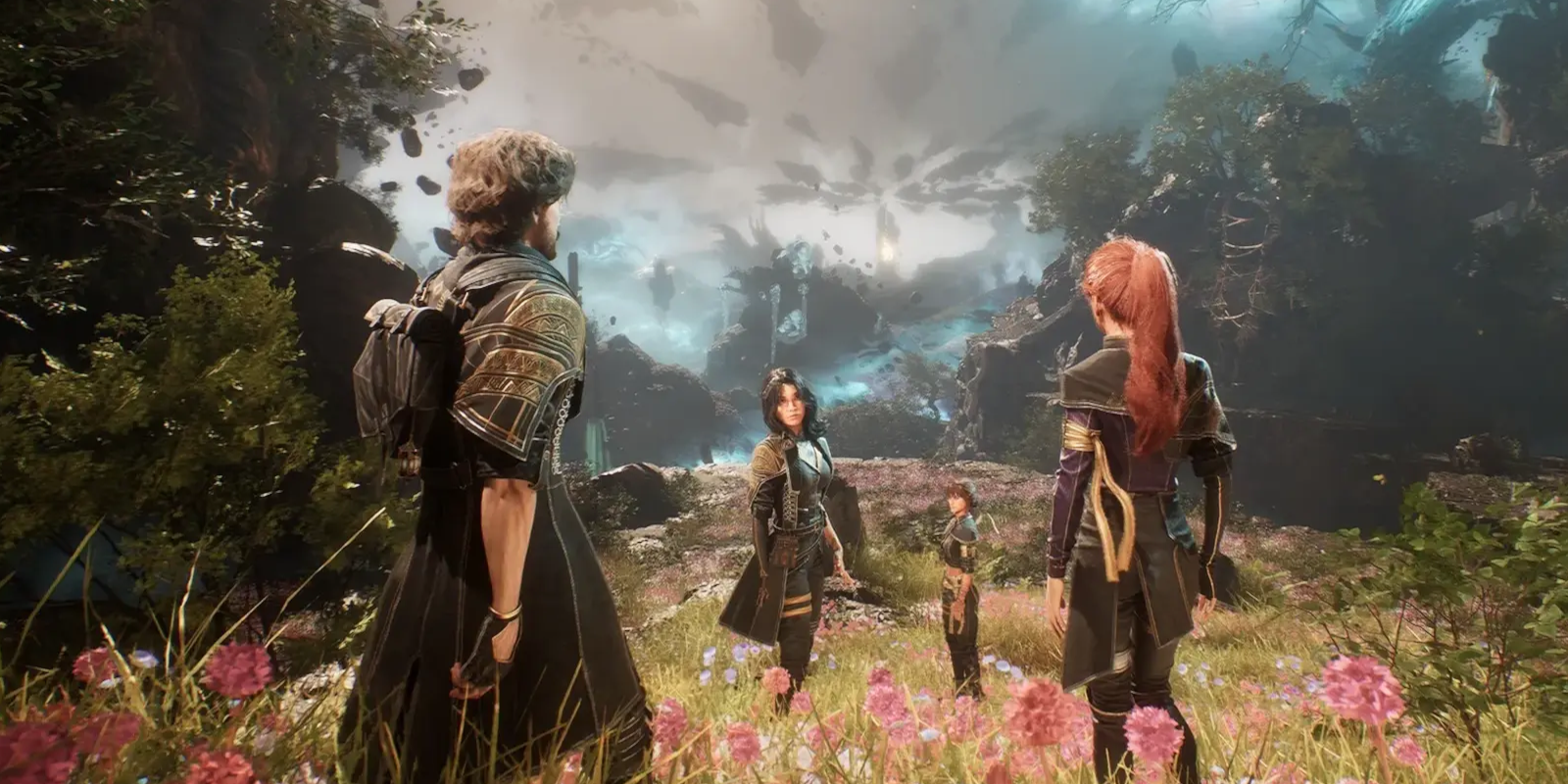Summer Game Fest and its surrounding blitzkrieg of game announcements were a triumphant showcase for the oft-beleaguered fighting game community. This disparate band of sickos known for discussing some of the craziest lore you’ve ever read and maintaining the Olympian-level dexterity required to input a pretzel motion mostly got what they asked for as fighting games took center stage at many of the events.
Leading the pack was Sony’s State of Play on Thursday. The event was announced at basically the last minute, and it ended with one hell of a surprise: Arc System Works, who developed all-timers like Dragon Ball FighterZ and Guilty Gear Strive, had gotten hold of the Marvel license. In collaboration with Sony and Marvel Games, they debuted Marvel Tōkon: Fighting Souls, a blistering 4v4 tag fighter dripping with enough style and action to make even the most stalwart fan say “Capcom who?”
Meanwhile, Geoff Keighley’s flagship Summer Game Fest had a pretty bombastic Street Fighter 6 trailer that revealed the next wave of fighters with help from AEW’s Kenny Omega. That announcement includes Ingrid, a bizarre oddity of the franchise who no one expected to see again, as her debut is tied to an infamously canceled title, Capcom Fighting All-Stars. And at the Xbox showcase, we learned that Quarter Up, a developer comprised of former Killer Instinct devs, would be making a 3v3 fighter based on the wildly popular Invincible franchise with Skybound Games.
It’s an exciting wave of news for the fighting game community, a close-knit group of like-minded gamers who are too often viewed as the stepchildren of the gaming industry. Fighting games, popular though they may be, remain somewhat obtuse to the average gamer. The barrier to entry is high because of the complicated and technical nature of the games, and the communities that support them can violently pivot from welcoming and supportive to oppressively toxic and salty. And that’s not including the actual, tangible cost: fighting games are expensive, and the content offerings tend to be modest, while online play requires a commitment if you want to be any good. An example: Street Fighter 6‘s base game set you back $60 at launch, and you’re now obligated to give them $40+ a year if you want to keep your roster current. The base price is down to $40 as of Season 3’s launch, but you’re also now two years behind everyone else who has been learning the game if you buy it today. World Tour is a robust story mode, but if you’re not interested in playing online (where you’re likely to get curb stomped by players who have been treating the game like a full-time job since launch) and don’t have friends to play with, then you’ve only got two dozen or so arcade ladders to beat before you’re maxed out on content.
But despite this, with all the Summer Game Fest announcements and the healthy post-launch life of ongoing fighters like Street Fighter 6, Fatal Fury: City of the Wolves, and Tekken 8, fans are making the same enthusiastic appraisal: “We’re back, baby!” The next great golden age of fighting games is upon us, they boldly have declared. I say they’re wrong, though. The next great golden age of fighting games started a while ago. And while you’re not too late to jump in, you may have already missed some of the highlights.
The Current Golden Age of Fighting Games
Look, the simple fact of the matter is that fighting games have been on an upswing, but you do have to look at the broader picture. Obviously, fighting games had their heyday in the early-to-mid ’90s; that’s indisputable. Street Fighter II, Mortal Kombat II, Tekken, Fatal Fury, etc, etc. The days of waning arcades and the rise of 16-bit home consoles and beyond made fighting games more accessible than ever. Gone were the days of quarters on arcade cabinets and hushed whispers of secret fighters who had just unlocked. Street Fighter II now lived on a little gray box you plugged into your home console, and you could play it as often as you liked.
But the genre struggled with the transition to 3D. While certified hits like Mortal Kombat: Deception and Tekken 5 kept the lights on, Street Fighter struggled to find its footing with the EX series, while Fatal Fury and The King of Fighters quickly fell out of the mainstream eye. This era is somewhat unceremoniously considered a “dark era” for fighting games, as the genre diminished greatly among poorly received releases and the death of arcades in the US. But in their wake, other franchises rose up. Soul Calibur became the premier weapons-based fighting game franchise, while titles like Virtua Fighter and Dead or Alive quickly cemented themselves. You have to remember, there was a point where Dead or Alive was big enough to be an Xbox 360 launch title.

While fighting games have not suffered another dip quite as bad, there was undeniably a small one. I feel like we saw the quality of fighting games — especially AAA ones — nosedive a little bit in the late ’00s and early ’10s, as the spectacle was a little muted and the releases became less bombastic.
Truly, I think the current golden age of fighting games has its roots in the releases a decade ago, all the way back in 2015. Just look at the stacked releases. For starters, the big guns all were on center stage. Mortal Kombat X is still lauded as the high point of the franchise from a narrative and gameplay perspective. Tekken 7 brought the franchise back to prominence after its predecessor’s less-than-stellar reception. And while it wouldn’t see a full release until 2016, 2015 is when fans got their first taste of Street Fighter V via an open beta.
Those opening salvos set the tone for where those franchises are today. Street Fighter V and Tekken 7 were the first time those two juggernauts really leaned into massive DLC campaigns that would see them embark on years-long production schemes rather than releasing a few seasons of content and then moving on to the next game. I think it really cemented fighting games as “back” in the traditional sense, as these iterations just felt huge. Even if you weren’t into the games, you likely saw a few Tekken 7 character reveal trailers, or that excellent Street Fighter V Arcade Edition opening cinematic that is now eight years old. And while those games and the titles that were released in conjunction with them, like Mortal Kombat 11, Samurai Shodown, and Soul Calibur VI, are excellent, they really just set the stage for where we are now.
Get Into Current Fighting Games While You Still Can
We’re in a fairly unique period right now, at the absolute apex of this generation’s fighting games. In fact, it may be the biggest the genre has ever been. It is for sure the most diverse, though. Multiple huge franchises have recent releases, and the renewed focus on training modes, casual lobbies, and offline modes means you have ample opportunity to pick a game, pick a main, and get in the ring. Just look at this stacked roster of currently active and upcoming fighting games.
- Guilty Gear -Strive- (Arc System Works, 2021)
- Street Fighter 6 (Capcom, 2023)
- Granblue Fantasy Versus: Rising (CyGames/Arc System Works, 2023)
- Tekken 8 (Bandai Namco, 2024)
- The King of Fighters XV (SNK, 2024)
- Dragon Ball: Sparking! Zero (Bandai Namco, 2024)
- Fatal Fury: City of the Wolves (SNK, 2025)
- 2XK0 (Riot Games, Coming later in 2025)
- Marvel Tōkon: Fighting Souls (Arc System Works, Coming in 2026)
- Virtua Fighter (Ryu Ga Gokuto Studio, TBA)
And that’s not including games that have ended support but still have active communities and huge rosters, like Dragon Ball FighterZ, Injustice 2 or Mortal Kombat 1, or compilations and re-releases of classic games finding a new audience, like Capcom’s multiple stellar Fighting Game Collection releases.

But if any of these catch your eye, then the time to get in is now. It is an unfortunate reality that the longer a fighting game is out, the harder the barrier to entry becomes. Online matches can quickly become the least hospitable place for you to learn controls, as players who have mastered the systems gleefully curb-stomp newbies left and right. If you want to see this in action, look no further than reports of players refunding Marvel vs. Capcom Fighting Game Collection after getting stomped by a 25-year-old veteran of the game.
But that’s just the way fighting games have always worked. We do have more ways than ever to learn how to play the games, though. Offline and training modes are now fairly standard additions where they didn’t used to be, so you can now spend some time in the lab learning the ins and outs of your favorite character. Lobbies are also a little more forgiving with the addition of casual lobbies.
This isn’t me trying to predict the end of an era or anything, for the record. I have personally been way more into fighting games over the past decade than any time before in my life (even though I’m not particularly great at them). The genre, as a whole, is in perhaps the most interesting place it’s ever been, as the AAA titles cement their legacies while scrappy underdogs and indie games take chances and break the mold. There is truly something for everyone in the fighting game community right now, and if you’ve ever wanted to get into fighting games, now is the time to do it.
Discover more from Homeworld
Subscribe to get the latest posts sent to your email.





